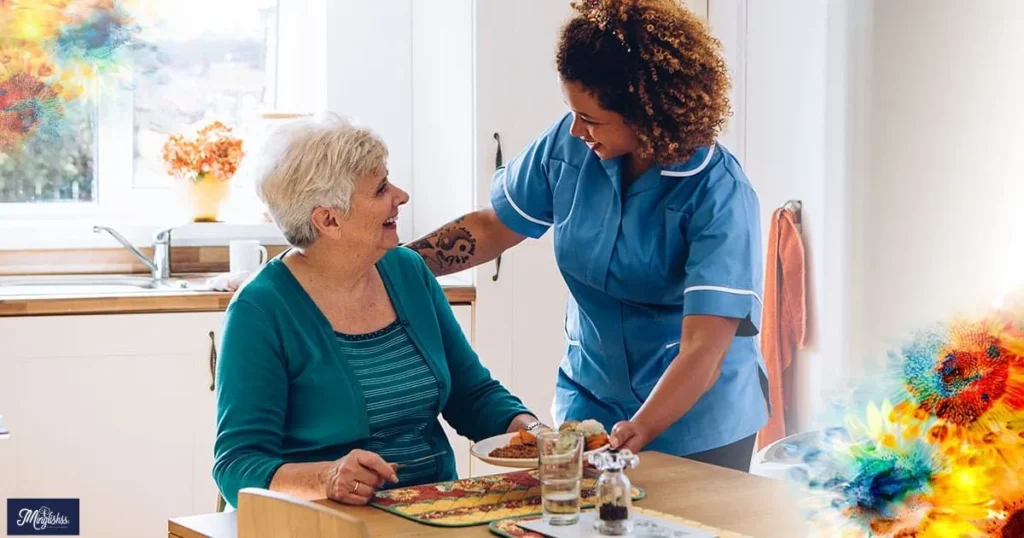“Different Ways to Say Special Needs”
When talking about individuals who require additional support due to physical, developmental, emotional, or intellectual differences, the language we use can carry significant meaning. Terms like “special needs” have been widely used, but it’s important to acknowledge that these words can sometimes carry negative connotations. Society is constantly evolving, and with that comes the recognition that the language surrounding these individuals should be both respectful and inclusive. This blog will explore alternative phrases that can be used to talk about special needs in a way that empowers and uplifts.
As language shapes perception, it’s crucial to be aware of how certain terms may impact the dignity and self-worth of the individuals they describe. By offering different options for discussing special needs, we can move towards a more inclusive environment that embraces diversity. Our goal is to help you understand these alternative terms, their significance, and how they can help foster a culture of acceptance and equality.
Whether you’re a teacher, caregiver, advocate, or simply someone looking to expand their vocabulary, this guide will provide helpful insights into respectful language alternatives. We’ll examine various phrases, explain their usage in real-world scenarios, and give you valuable tips on how to choose the best wording for any situation.
35 Alternative Phrases for “Special Needs”
1. Developmental Disabilities
Scenario: Sarah, a teacher at a local school, is speaking with a parent about their child’s learning challenges.
Explanation: “Developmental disabilities” is a term commonly used to describe intellectual and developmental delays. This phrase focuses on the specific areas of development that are impacted, without labeling the individual negatively.
Additional Tips: It is essential to pair this term with specific developmental areas, like speech or motor skills, to make the language more tailored to the individual.
2. Differing Abilities
Scenario: Jason is giving a presentation to his colleagues about a new inclusive workplace initiative.
Explanation: “Differing abilities” highlights that everyone has unique strengths and challenges. It focuses on the differences, but in a positive light, emphasizing individuality.
Additional Tips: This term works well in settings where the goal is to promote diversity and equality.
3. Learning Differences
Scenario: Emma, a student, tells her counselor about her experiences in the classroom.
Explanation: “Learning differences” refers to how a person processes information in unique ways. It’s often used in education to describe conditions like dyslexia, ADHD, or autism.
Additional Tips: This term is non-stigmatizing and encourages educators to provide varied approaches to learning.
4. Neurodiversity
Scenario: At a conference on inclusive education, Mark uses the term “neurodiversity” to describe the range of cognitive variations among students.
Explanation: “Neurodiversity” refers to the natural variation in human brain function. It emphasizes the idea that conditions like autism, ADHD, and dyslexia are just different ways of thinking rather than disorders.
Additional Tips: This term is commonly embraced within communities that advocate for autism acceptance and promotes understanding that neurological differences should be celebrated.
5. Chronic Health Conditions
Scenario: Lily is talking to her doctor about her son’s long-term health struggles.
Explanation: “Chronic health conditions” covers a broad range of ongoing health issues, from mental health to physical disabilities, that require continual management.
Additional Tips: It’s important to define the specific condition to avoid generalization.
6. Physical Disabilities
Scenario: Tom is working with a young student in his classroom who uses a wheelchair.
Explanation: “Physical disabilities” is a straightforward term to describe conditions that affect a person’s movement or physical abilities, such as paralysis or amputation.
Additional Tips: Avoid using terms like “disability, or “person ” as these can be offensive.
7. Emotional Disturbances
Scenario: A counselor is meeting with a parent to discuss their child’s behavioral challenges.
Explanation: “Emotional disturbances” refers to mental health conditions that may cause a person to experience extreme emotional responses, impacting daily life.
Additional Tips: It’s essential to approach this term with sensitivity, as it can still carry a negative stigma.
8. Access Needs
Scenario: During a community event, a volunteer asks about specific access needs for attendees.
Explanation: “Access needs” is a term that highlights an individual’s need for accommodations or modifications to participate in activities or environments.
Additional Tips: Use this term in contexts where you need to specify the types of adjustments or aids a person may require.
9. Inclusive Needs
Scenario: In a team meeting, Jessica talks about ensuring inclusivity for all participants, including those with additional needs.
Explanation: “Inclusive needs” suggests that certain individuals require specific support to engage fully in society, and it aligns with inclusive policies.
Additional Tips: This term is highly applicable in workplaces or schools aiming for full participation from everyone.
10. Support Needs
Scenario: Mark is developing an individualized education plan (IEP) for a student with autism and explains the student’s support needs.
Explanation: “Support needs” is a term that refers to the specific assistance a person needs to thrive. It could range from educational to emotional or physical help.
Additional Tips: This term emphasizes the need for providing appropriate resources.
11. Adaptive Needs
Scenario: A parent talks to a healthcare professional about their child’s adaptive needs for daily living.
Explanation: “Adaptive needs” typically refers to the assistance a person requires in adapting to daily life, such as adaptive technologies or support for mobility.
Additional Tips: This is commonly used in educational and rehabilitation contexts.
12. Exceptional Needs
Scenario: Dr. Green works in a pediatric clinic, where she discusses the exceptional needs of her patients.
Explanation: “Exceptional needs” highlights a person’s unique needs and emphasizes the extraordinary aspects of their experiences.
Additional Tips: This phrase can be uplifting, as it shifts the focus to a person’s potential rather than limitations.
13. Diverse Needs
Scenario: During a faculty meeting, Sarah addresses the diverse needs of her students.
Explanation: “Diverse needs” acknowledges that every individual has a variety of needs that may differ greatly from others. It’s a broad term that includes physical, cognitive, and emotional support needs.
Additional Tips: Use this term when discussing a range of different requirements, especially in diverse environments.
14. Differently person with a disability
Scenario: Charles introduces a new campaign to his employees focused on hiring people with different abilities.
Explanation: “Differently person with a disability” is another way to reframe the conversation by focusing on the abilities someone has rather than what they may lack.
Additional Tips: Be mindful that some may find this term outdated or avoid it for its over-simplification.
15. Vulnerable Populations
Scenario: At a community service meeting, Jessica discusses how they can better support vulnerable populations in their area.
Explanation: “Vulnerable populations” includes individuals who face heightened risks due to their physical, mental, or social conditions.
Additional Tips: Use this term when discussing broader groups who need protection or support.
16. At-Risk Individuals
Scenario: A social worker meets with a family whose child is at risk for developmental delays due to premature birth.
Explanation: “At-risk individuals” refers to people who are more likely to experience difficulties due to factors like genetics or environmental influences.
Additional Tips: It’s important to avoid assuming someone is at risk based solely on external factors.
Other Ways to Say “Tell Me About Yourself”
17. Differently-Conditioned
Scenario: During an outreach event, Rachel uses the term “differently-conditioned” to refer to people with physical disabilities.
Explanation: “Differently-conditioned” focuses on the various physical or mental conditions that impact an individual’s day-to-day life.
Additional Tips: This term can be more appropriate for certain contexts, but may not be widely understood.
18. Special Healthcare Needs

Scenario: A doctor speaks to a parent about their child’s special healthcare needs, including frequent medical visits.
Explanation: “Special healthcare needs” is often used to describe children who require additional medical care or interventions due to chronic conditions or disabilities.
Additional Tips: This term is most suitable for medical and healthcare contexts.
19. Functional Limitations
Scenario: Tim is reviewing a patient’s report with his medical team, describing their functional limitations.
Explanation: “Functional limitations” refers to a person’s reduced ability to perform tasks due to a physical, cognitive, or emotional condition.
Additional Tips: This term can be helpful in legal or insurance contexts.
20. Unique Health Needs
Scenario: Lisa is explaining her child’s unique health needs to a school administrator.
Explanation: “Unique health needs” describes conditions that require tailored healthcare plans or attention.
Additional Tips: This phrase emphasizes individuality and personal care plans.
21. Diverse Abilities
Scenario: In a diversity training session, John discusses the importance of recognizing diverse abilities among staff members.
Explanation: “Diverse abilities” highlights the strengths and skills that individuals with disabilities bring to the table.
Additional Tips: This term can help frame the conversation in a more positive light, focusing on inclusivity.
22. Life Challenges
Scenario: Sarah and her husband discuss their child’s life challenges in a support group.
Explanation: “Life challenges” is a broader term that can include emotional, mental, and physical hurdles.
Additional Tips: Use this term when talking about the difficulties individuals face without framing them as “special.”
23. Individualized Needs
Scenario: Lisa is creating a plan for her student’s individualized needs in the classroom.
Explanation: “Individualized needs” refers to a person’s unique requirements that must be addressed in personalized ways.
Additional Tips: This term is commonly used in educational and healthcare settings.
24. Barrier-Free Needs
Scenario: A non-profit organization works to create barrier-free environments for individuals with mobility impairments.
Explanation: “Barrier-free needs” refers to the accommodations required to ensure accessibility for everyone, particularly those with physical disabilities.
Additional Tips: This term works best in the context of physical spaces or accommodations.
25. Assisted Living Needs
Scenario: A family talks to a care facility about their people older relative’s assisted living needs.
Explanation: “Assisted living needs” typically refers to the help an individual requires to carry out daily activities, particularly in older adults or those with long-term disabilities.
Additional Tips: This term is often used in healthcare and eldercare settings.
26. Supportive Services
Scenario: James explains the variety of supportive services available at the community center.
Explanation: “Supportive services” refers to any assistance that helps an individual live more independently, including emotional or physical help.
Additional Tips: It’s commonly used in social services and rehabilitation contexts.
27. Chronic Disabilities
Scenario: Ann talks to a group about the challenges faced by people with chronic disabilities.
Explanation: “Chronic disabilities” refers to long-lasting conditions that limit a person’s ability to function independently.
Additional Tips: This term works well for health professionals discussing long-term conditions.
28. Holistic Health Needs
Scenario: A counselor discusses a holistic approach to addressing the health needs of a child with ADHD.
Explanation: “Holistic health needs” considers the full spectrum of an individual’s mental, physical, and emotional well-being.
Additional Tips: This phrase is commonly used in wellness and mental health practices.
29. Equity Needs
Scenario: During a school board meeting, Karen talks about ensuring equity needs are met for all students, regardless of their abilities.
Explanation: “Equity needs” focuses on providing the necessary resources and support to ensure that everyone has an equal opportunity to succeed.
Additional Tips: Use this term when talking about access to services or opportunities.
30. Tailored Support
Scenario: In an interview, Jane explains how her company provides tailored support to employees with disabilities.
Explanation: “Tailored support” means customizing the assistance someone receives based on their unique challenges and requirements.
Additional Tips: This term is often used in employment or education contexts.
31. Inclusive Education Needs
Scenario: A teacher in a special education class talks about the inclusive education needs of her students.
Explanation: “Inclusive education needs” refers to the requirement for schools to provide accommodations to students with disabilities to help them learn effectively.
Additional Tips: This term is essential in educational policy and curriculum development.
32. Social Service Needs
Scenario: Anna discusses her client’s social service needs with her supervisor.
Explanation: “Social service needs” covers the various forms of support people might require to manage their social, economic, and health challenges.
Additional Tips: This term is widely used in public health and social work.
33. Resource Needs
Scenario: A case manager meets with a family to discuss their child’s resource needs for therapy sessions.
Explanation: “Resource needs” describes the types of services, tools, or materials required to help an individual succeed.
Additional Tips: This term is often used in professional or service-oriented settings.
34. Personal Care Needs

Scenario: Robert talks to a nurse about his father’s personal care needs as he recovers from surgery.
Explanation: “Personal care needs” refers to the support required for daily living activities, such as bathing or dressing.
Additional Tips: This term is more common in healthcare and eldercare discussions.
35. Cognitive Disabilities
Scenario: A clinical psychologist uses the term “cognitive disabilities” to describe a child’s challenges with learning.
Explanation: “Cognitive disabilities” refers to impairments in mental functions such as memory, problem-solving, and reasoning.
Additional Tips: This term is especially relevant in medical and psychological contexts.
Pros and Cons
Pros
- Using more specific language promotes individuality and respect.
- Some terms focus on the strengths of individuals, rather than their challenges.
- More inclusive terms foster a culture of acceptance and equality.
Cons
- Some terms may be considered outdated or insensitive in certain circles.
- There may be misunderstandings around the meanings of specific terms.
- The use of alternative terms may oversimplify complex conditions.
Conclusion
The way we refer to individuals with disabilities or additional needs is crucial in creating a society that values diversity and inclusion. By using more respectful and empowering language, we can help to reduce stigma and foster an environment of understanding.
Choosing the right term depends on the context and the individuals involved, but it’s important to always approach the topic with respect and awareness. By embracing more inclusive language, we ensure that everyone is recognized for their unique abilities and potential.

Hi, I’m Isabel: I’m passionate about turning language learning into a fun adventure. I believe in making every word exciting and memorable.










